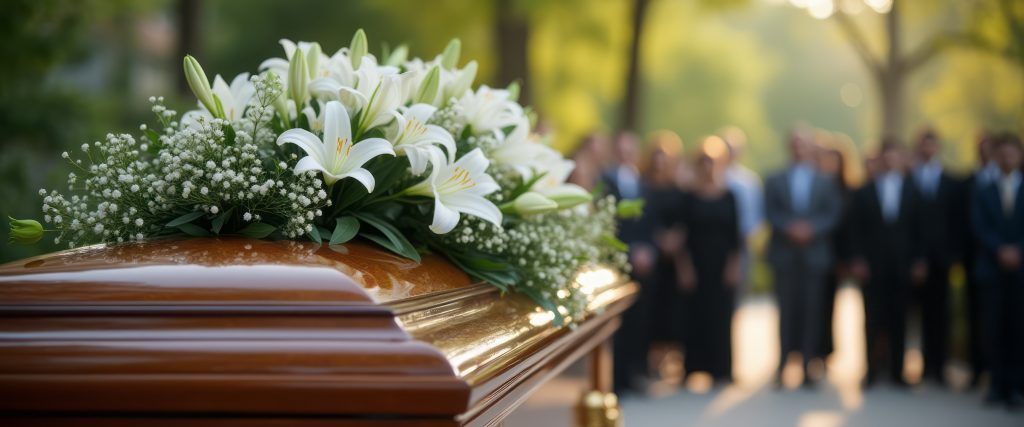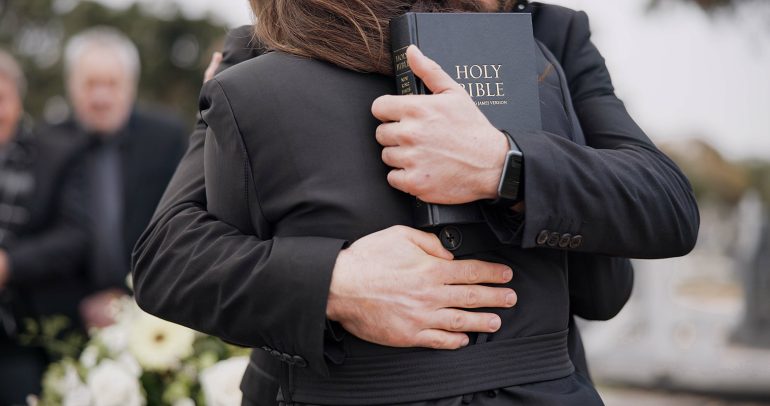Paraguay is a country where over 70% of the population identifies as Catholic. As a result, most people live according to traditions and beliefs deeply influenced by this religion. Among these, one important rite is the funeral, which allows families to bid farewell to their loved ones and commend them to God.
Funerals are not only a way to honour a person’s earthly life but also a way to accompany them towards eternal rest. During this rite, the family of the deceased receives emotional and spiritual support, as these are moments filled with sorrow and uncertainty.
In Paraguay, funerals are not quick events but rather a series of rites that can extend over more than a day. They usually involve three main ceremonies: the velorio (wake), the funeral mass or prayer service, and the burial. Additionally, funerals are not the last occasion to honour the deceased. It is customary to keep their memory alive through visits, prayers, and masses.
The first rite: The wake
The wake, also known as the vigil, is usually held the night before the funeral. During this gathering, family members, friends, and anyone wishing to share in the mourning come together to honour the deceased and offer condolences. Generally, it lasts one day, though in rural areas it can continue for longer. The location may vary, while some families hold it at the deceased’s home, others choose a funeral parlour.
When attending a wake, it is important to remember that it is a moment of deep grief, so showing respect and empathy is essential. Although dressing in black is not mandatory, dark and discreet colours are the most common choice. When offering condolences, it is customary to express support through a hug, sometimes accompanied by words, and sometimes simply through a compassionate silence.
In addition to one’s presence, floral tributes are also a common gesture of support. Florists in Paraguay prepare special arrangements for such occasions, with the most elaborate being funeral wreaths. These are often sent by groups, whether families, companies, or other organisations, as a way to express collective sympathy.
The second ceremony: Funeral mass or prayer service
The funeral mass is a tradition that has declined in popularity but is still celebrated on certain occasions. These masses are held in the presence of the body, meaning that the deceased is brought to the church. They follow a series of specific rites and rituals that reflect the Catholic faith in resurrection and life after death.
Those who do not bring the body to the church often opt for a prayer service (responso fúnebre). This process consists of prayers offered for the deceased before burial. In this case, a priest or pastor is invited to lead the service, as only those ordained by the Church have the authority to conduct it.
Unlike the funeral mass, the prayer service can be held in various locations. During the service, the setting is usually adorned with flowers, and a favourite photograph of the deceased is placed in remembrance. Those who wish to share a few words in memory of the person may do so with the family’s permission.


The third ceremony: The burial
After the funeral mass or prayer service, the funeral procession proceeds to the cemetery, either in a convoy of vehicles or by gathering at the burial site. At the cemetery, a final prayer or blessing is offered before the body is laid to rest. It is customary for attendees to throw flowers or a handful of soil onto the coffin. This can be done only with the family’s consent.
During the burial, it is common to express condolences to the closest relatives, with words such as “I’m sorry for your loss,” “my condolences,” or “I’m here if you need anything.” The most important thing is to show empathy and sensitivity. The best is to avoid any words that might upset or offend those who are grieving. It is also respectful not to prolong these interactions, as each person must be given space to process their emotions.
Traditions after the burial
In Paraguay, farewells do not end with the burial, they often continue for some time. In many cases, during the nine days following the funeral, the family gathers each evening. They are praying the novena, asking for the repose of the soul. On the ninth day, a special mass is held, often followed by a shared meal with those who offered their support.
After six months and on the first anniversary of the person’s death, families commonly hold commemorative masses to continue honouring their memory. This practice varies from family to family, but it is quite common to receive invitations to these remembrance masses. In Paraguayan culture, offering support and companionship remains significant even months after the passing. Then, in Paraguay, funerals are deeply emotional occasions, filled with sorrow, certainly, but also with a sense of hope for the afterlife. Loved ones are never forgotten; rather, it is tradition to remember them and pray for them whenever possible.
Read more: Paraguayan Weddings: What Every Guest Needs To Know!


